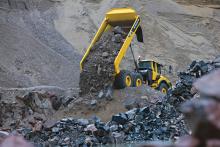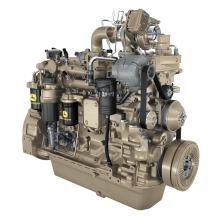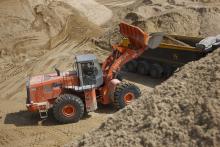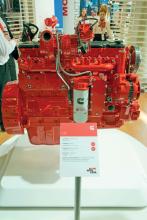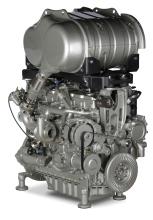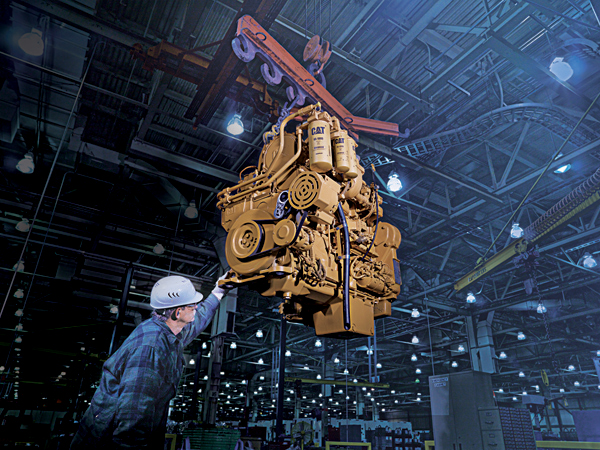
EU legislation has driven engine development over the last 15 years but what will be the main push after implementation of the final stage? Caterpillar believes the answer is sustainability
Introduction of the Stage IIIB engine emissions legislation in January this year resulted in numerous new machines being launched by construction equipment manufacturers at this spring's
"Our goal for 2020 will be sustainability for both our operations and the products we produce," said Cat engineering systems director Adrian Heath, speaking at the recent launch of the company's new ADT range. "This is being driven by customer pressure, as well as legislation in some regions, and will focus on issues such as energy efficiency, water efficiency and waste management." Heath explained that Cat spent US$7million dollars a day - around 4.5% of sales revenues - on research and development in 2010 and the company expects to raise that figure further in 2011. "We work on a four year cycle of development," explained Heath. "Using customer, business and regulatory input we aim to increase customer value through design." While the company has already revealed part of its Stage IV emissions strategy, work is still on-going but the company is looking beyond 2014 already.
"Stage V legislation for the industry is under discussion and it would further tighten emissions levels and bring construction equipment emissions closely in line with those applied to on-highway trucks," said Heath. "However, this progression is not yet certain and we are looking at what further development can be achieved through looking at overall sustainability." Cat's operational goals for 2020 include a 25% increase in energy efficiency, 25% reduction in greenhouse gases from existing facilities, 20% of energy requirements met by alternative or renewable sources, elimination of waste and reduction in recordable workplace injury rate to 0.6 and lost time injuries to 0.15. For its products, the company wants to provide leadership in the area of safety, help customers reduce greenhouse gas emissions by 20%, increase energy efficiency by 20% and raise material efficiency by 20%.
"We think that there are between 5 and 10% efficiency improvements to be delivered from further engine development in the next five years," said Heath. "Improvements in machine efficiency could offer another 10 to 20% through system optimisation. Improved implementation on the job site could deliver another 10 to 30% efficiency using the right machine for the job and systems like Accugrade to make sure the material is only moved once. Zero carbon fuels, such as biofuels, could offer massive benefits. Machine design needs to take more of a lifecycle view but there are good opportunities to achieve efficiency through low carbon solutions." According to Heath, hybrid powered machines will also have a part to play in improving sustainability. He pointed to the D7E dozer as the start of Cat's development in this area and said that other machine types will be launched to meet customer needs. "Hybrid power is the ideal solution for mobile equipment," he said.
Heath added that remanufacturing and energy efficiency in the company's own manufacturing plants will also make a difference to sustainability.
In conclusion, Heath quoted Thomas Edison: "There is a better way to do it. Find it." and Heath believes this mantra will also serve the construction equipment industry well in its drive for sustainability.

